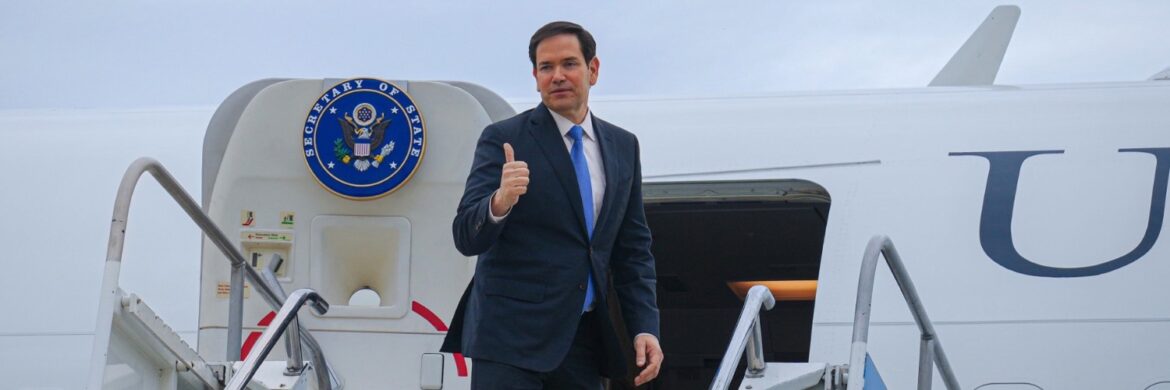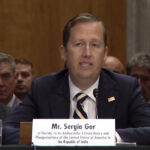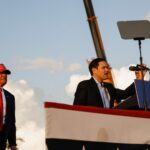On September 11, 2025, when the Secretary of State Marco Rubio introduced Sergio Gor as the U.S. envoy-designate to India at his Senate Foreign Relations Committee confirmation hearing, he called India “one of the top relationships the U.S. has in the world today” and said the 21st century’s story “is going to be written in the Indo-Pacific.”
It was more than flattering boilerplate for a nominee; it was a strategic thesis about where U.S. power, prosperity, and security will be contested and why New Delhi sits near the center of that map.
Secretary Rubio’s emphasis reflects a convergence of hard security realities, economic statecraft, and diplomatic architecture. Framing Gor’s nomination through this lens signals that Washington wants an envoy in New Delhi who can operate at the intersection of all three. The U.S. Indo-Pacific Strategy is central to deterring Chinese coercion, keeping sea lanes open, and focusing on advancing its technology and trade through regional minilaterals such as the Quad and the Indo-Pacific Economic Framework (IPEF).
The Indo-Pacific is where the United States and its allies aim to deter Beijing’s coercion, from the Himalayas to the South China Sea. India matters not only as the world’s largest democracy but also as a continental and maritime partner in the Indian Ocean with growing capabilities and shared concerns.
It is no surprise that Secretary Rubio noted Washington’s 2018 decision to rename U.S. Pacific Command as U.S. Indo-Pacific Command, signaling that this theater is central to American strategy, with India at the core. The change, made during President Trump’s first term, reflected the growing connectivity between the Indian and Pacific Oceans and acknowledged India’s expanding strategic role in the U.S. National Defense Strategy.
Secretary Rubio’s pitch for Gor highlighted the value of New Delhi’s convening power. Critics in the West bristled when Prime Minister Modi met Chinese and Russian leaders, but in forums like BRICS and the SCO, which often tilt against Western preferences, India acts as a stabilizing balancer. It keeps channels open; resisting agendas it finds misaligned, such as the Belt and Road, and pushes for more rules-based language and practical cooperation.
The United States has clear security and economic incentives to deepen work with India via the Quad and IPEF while advancing practical cooperation on maritime security, critical minerals, and tech infrastructure. With the Trump administration stitching together issue-based coalitions across the Indian and Pacific Oceans, India is a force multiplier. It combines democratic legitimacy with cultural familiarity in Southeast Asia, allowing it to convene, coordinate, and scale regional initiatives.
Why now? Recent hard-line statements from senior economic and trade voices created a combative atmosphere in Washington’s dealings with New Delhi. Democratic critics argued that the Trump administration put at risk a relationship built over twenty-five years, pointing to new tariffs and mixed signals, including the White House lunch for Pakistan’s army chief. With India now the world’s most populous country and a major market, they warned that Washington cannot afford to be at odds with both China and India. Against that backdrop, Secretary Rubio’s measured remarks stood out.
He recentred India in U.S. strategy and signaled a turn toward problem-solving. The White House then leaned in, authorizing a restart of stalled trade talks and publicly wishing Prime Minister Modi on his birthday. These gestures do not substitute for outcomes, but they change the mood and create room for dialogue.
The United States and India are back at the negotiating table, a prospect Gor hinted at during his Senate nomination hearing. The chill in ties after the one-sided imposition of 50 percent tariffs tied to India’s purchases of Russian oil is beginning to lift, and an early economic thaw looks feasible. If it materializes, it could expand trade, spur investment in critical sectors including semiconductors, clean energy, and digital services, and speed diversification of supply chains away from single-point dependencies on China.
President Trump has made cutting the trade deficit a major priority for his administration, giving both sides added incentive to move. Both countries are also seeking to narrow their trade imbalances with Beijing, so a bilateral trade fix is no longer a sideshow. It is the bridge between geopolitics and growth.
If the renewed momentum between U.S.-India relations is followed by concrete steps on tariffs, technology, and defense, Gor, a close confidant of President Trump, will have a smoother landing in New Delhi. However, Secretary Rubio’s larger point merits attention.
The U.S.-India relationship has become a platform rather than a single project. Platforms support multiple, simultaneous initiatives; results may vary, but the architecture persists. By calling India a ‘top relationship’ and placing it at the heart of the Indo-Pacific strategy, Washington is treating the partnership as strategic infrastructure that endures across parties and administrations.






